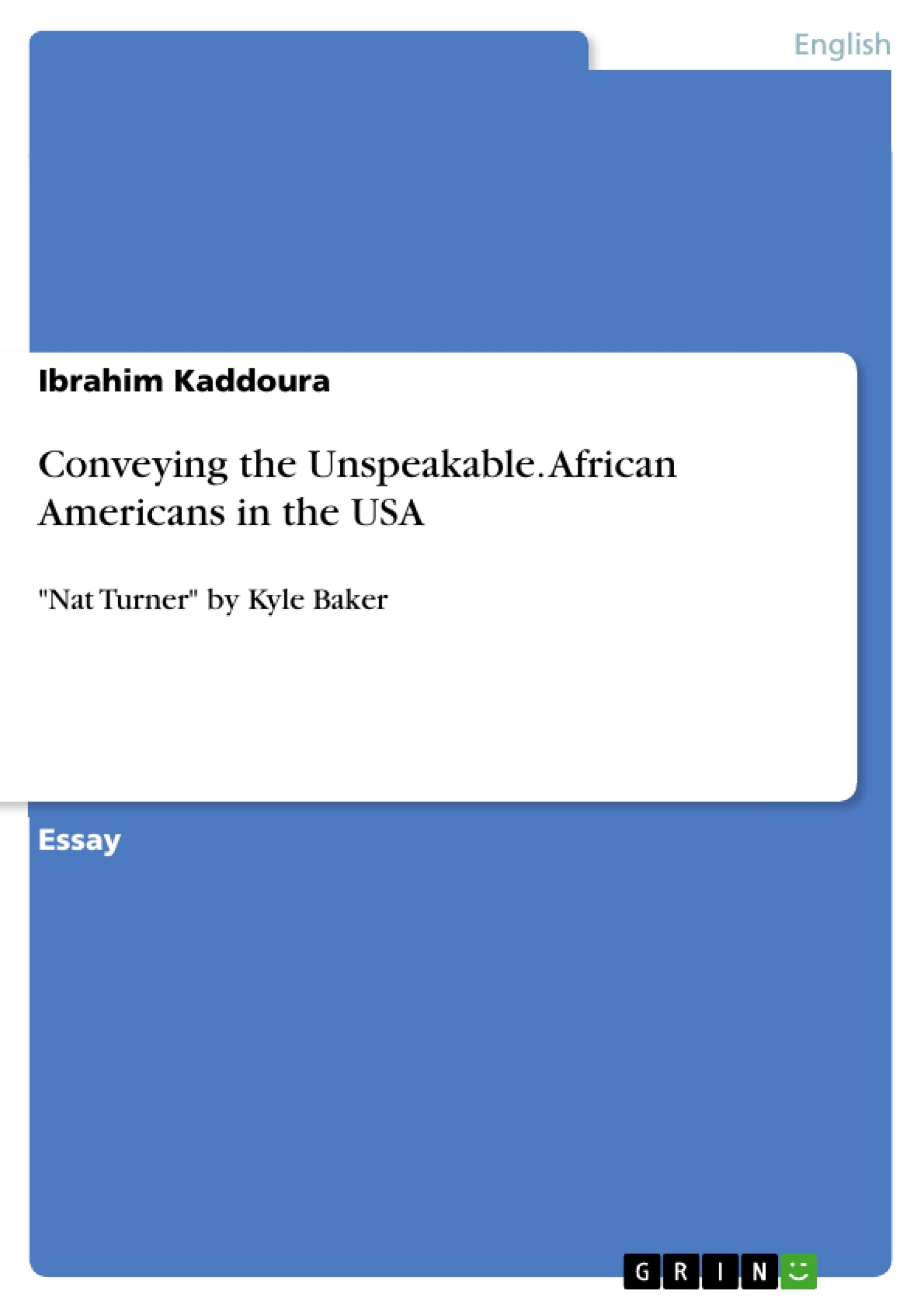"A picture is worth a thousand words", says a famous English proverb, pointing out that a complex idea can easily be conveyed with just a single still image, or that an image conveys its own meaning more effectively than a description does.
By referring to Michal Chaney and Consuela Francis, this essay shall demonstrate that Kyle Baker draws in his visual narrative Nat Turner an image of the unspeakable. The target readers are helped to understand the torture and suffering of African Americans who were brought to the USA by the Middle Passage and Baker also visualizes the depression and misery of enslaved people.
In order to show how this visualization works, three different panels will be described and analyzed. In the first section we will discuss how exactly Baker depicts the anxiety, horror and panic of the characters. Afterwards, it will be shown in which manner despair and gloom are portrayed, and the last section will treat the ideas of hope, optimism and faith in Nat Turner.
This paper will also show how the reader gets involved into these different emotions and how he is meant to conceptualize the content of the different panels. The analyzed panels can be found in the appendix of this essay.
Inhaltsverzeichnis (Table of Contents)
- Conveying the Unspeakable
- The Anxiety, Horror and Panic
- Despair and Gloom
- Hope, Optimism and Faith in Nat Turner
Zielsetzung und Themenschwerpunkte (Objectives and Key Themes)
This essay examines how Kyle Baker utilizes visual storytelling in his graphic narrative, "Nat Turner," to convey the unspeakable suffering and pain of African Americans during the Middle Passage and their subsequent enslavement. The author draws on the work of Michal Chaney and Consuela Francis to illustrate how Baker's powerful imagery evokes empathy and antipathy towards the characters, prompting the reader to engage with the emotional complexities of the narrative.
- Visual storytelling and the power of imagery
- Depicting the physical and emotional trauma of slavery
- The use of close-ups to evoke empathy and visceral reactions
- The exploration of themes of despair, hope, and violence
- The role of the reader in interpreting and experiencing the narrative
Zusammenfassung der Kapitel (Chapter Summaries)
The essay analyzes three key panels from the graphic narrative. The first panel depicts the brutal branding of an enslaved woman, evoking feelings of pity and highlighting the violence inflicted upon African Americans. This panel demonstrates the power of visual imagery to convey the horror of slavery without relying on extensive text.
The second panel focuses on the despair and misery of an enslaved father who chooses to surrender his baby to the sharks rather than allow him to be enslaved. The father's anguish and the viewers' emotional confusion underscore the harsh realities of life as a slave. This panel presents a moral dilemma, forcing readers to grapple with the ethical justification of the father's actions.
The third panel, a horizontally extended image, portrays Nat Turner's vision of a celestial revelation, embodying a turning point in the narrative. The powerful imagery of the thunderstorm and the extract from Turner's confessions highlight his hope and optimism as he envisions himself as a liberator for his people. This panel suggests that the violence experienced by enslaved people can transform into a powerful resistance movement.
Schlüsselwörter (Keywords)
This essay focuses on key concepts such as graphic narratives, visual storytelling, empathy, antipathy, the Middle Passage, slavery, violence, despair, hope, and the portrayal of historical figures like Nat Turner. The discussion highlights the power of visual imagery to convey emotional complexities and engage the reader in complex moral dilemmas.
- Quote paper
- Ibrahim Kaddoura (Author), 2015, Conveying the Unspeakable. African Americans in the USA, Munich, GRIN Verlag, https://www.grin.com/document/378016



